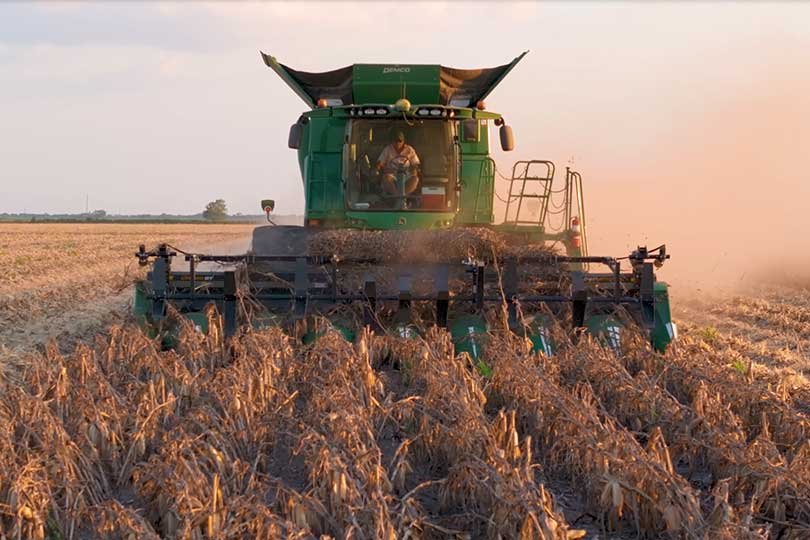By Shelby Shank
Field Editor
Hurricanes are a part of farming along the Texas coast. Just ask the Krenek family, who faced a tough corn harvest after Hurricane Beryl swept through in early July.
“We’ve always had summer storms, tropical rains,” fourth-generation farmer Jonathan Krenek said. “A hurricane is going to happen. It’s just when.”
And the timing of Beryl’s impact was significant.
“The hurricane was unique. It came in so early,” he said. “Typically, we can get the corn out, and we’re worried about the cotton with the hurricane—never the hurricane coming before the corn was ready.”
Row after row was left damaged. The hurricane’s winds snapped stalks in half, falling in various directions across the field.
Krenek, who farms alongside his father and brother in Wharton and Colorado counties, knew they were going to face a challenging harvest.
“As soon as the hurricane blew through and I looked at the first field of corn, I called dad and said you better start looking for something to pick this corn. We’re going to have to have it,” Krenek said. “We had too much corn to harvest this year, and knowing that the magnitude of it blew to the ground, we were going to have to get something to help.”
What should have been a routine process of going back and forth across the fields turned into a time-consuming effort of deadheading—driving to the end of the field, then looping back to start over.
“It takes twice as much time to harvest,” Krenek said. “You have to go to the end of the field, drive back to the other end and come back to do it again. It’s just constant all day, and it adds up. That’s half a day of production.”
The additional time and fuel costs doubled on both the machinery and the farmers themselves.
But they did find a way to save some time and work. They researched solutions and connected with farmers in the Midwest who introduced them to corn sweepers, an attachment the Kreneks put on the combine header.
“The corn sweepers keep the corn off of the head and actually feed it into the auger,” Krenek said. “Without these, it would pile, and when it piles, you have to physically get out of the combine, sweep it off and start again. With the sweeper, I haven’t gotten out at all.”
The timing of the hurricane added another layer of challenges for the farming family.
After the hurricane hit, the corn was too high in moisture to start harvesting, so they waited. When they could finally get to harvest the crop, the corn moisture was 11%.
“It’s way past dry, and that’s costing us money because we’re putting the dry corn in the grain bin, which it should have been put in at 15%. Now, it’s super dry,” Krenek said.
Yet, even with setbacks, Krenek is optimistic and determined to keep moving forward.
“I just keep farming. It’s the way of life. I love watching things grow and expanding the business,” he said. “You just have to be optimistic and hope that next year’s a better year and just keep looking for the future and hope for better yields and pricing.”


Leave A Comment